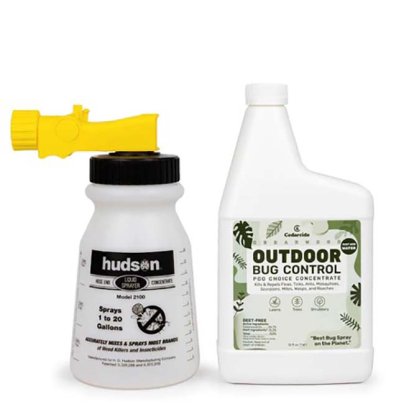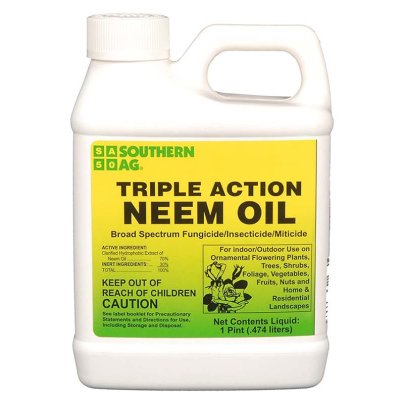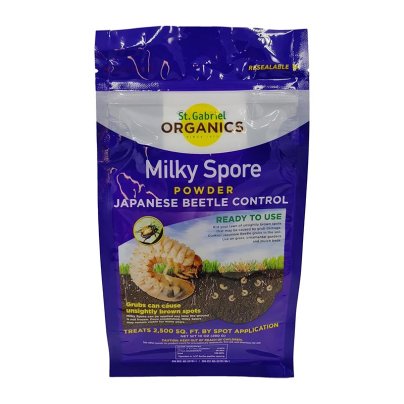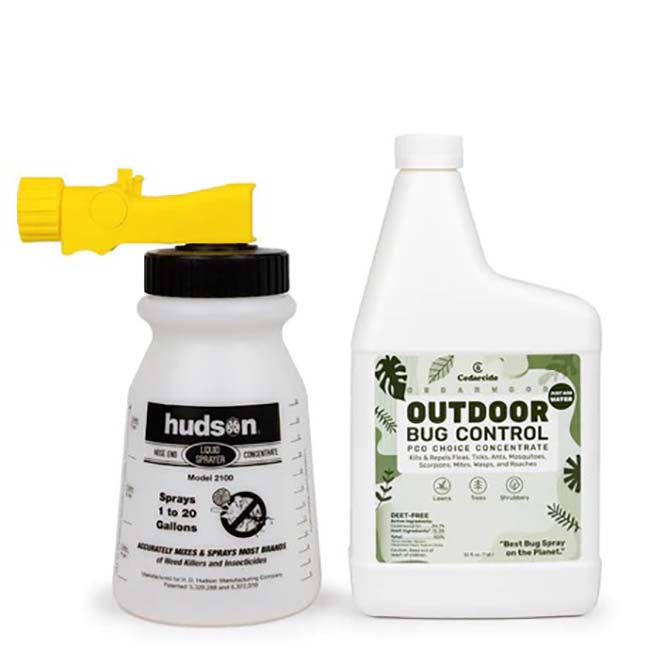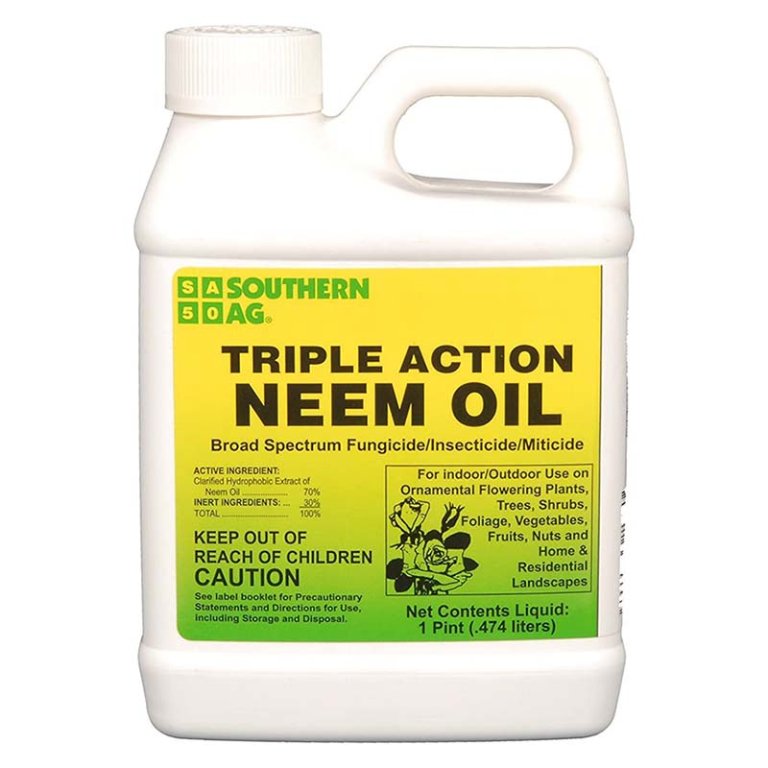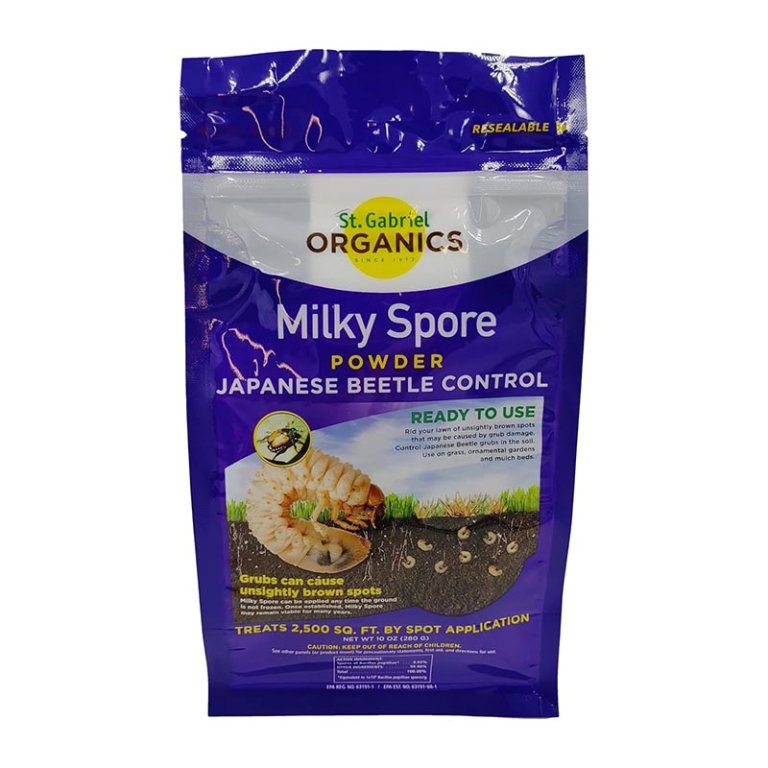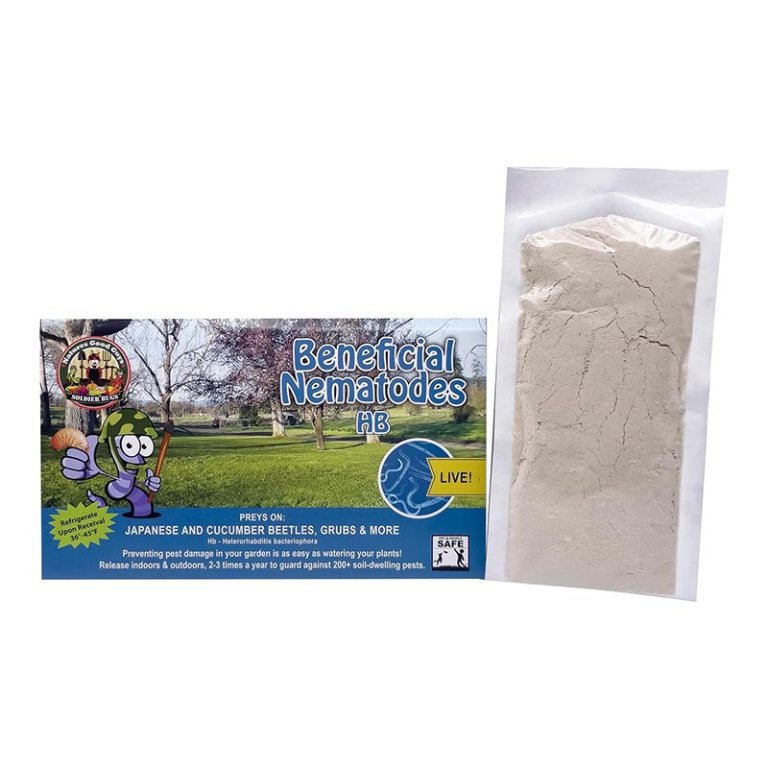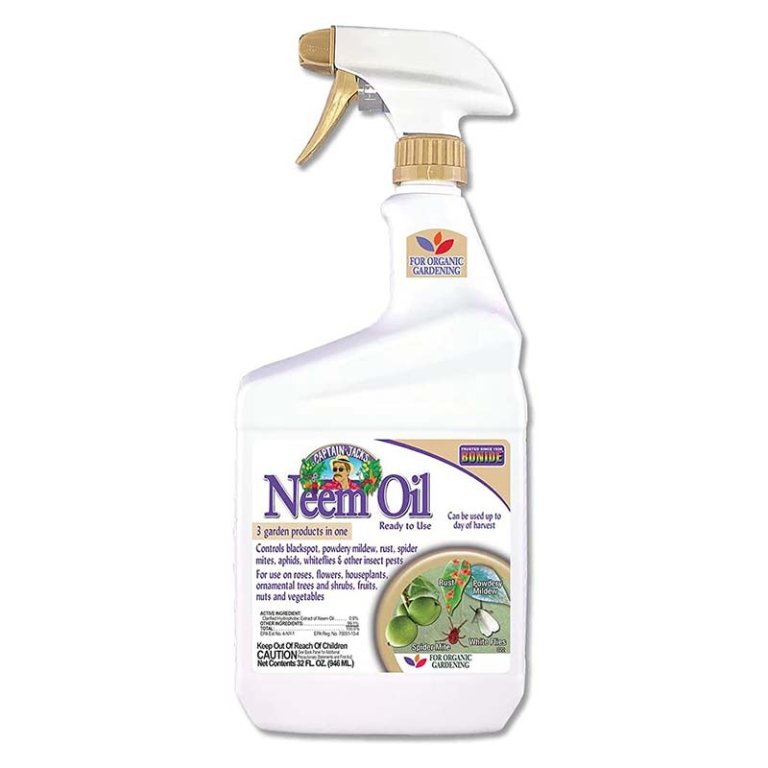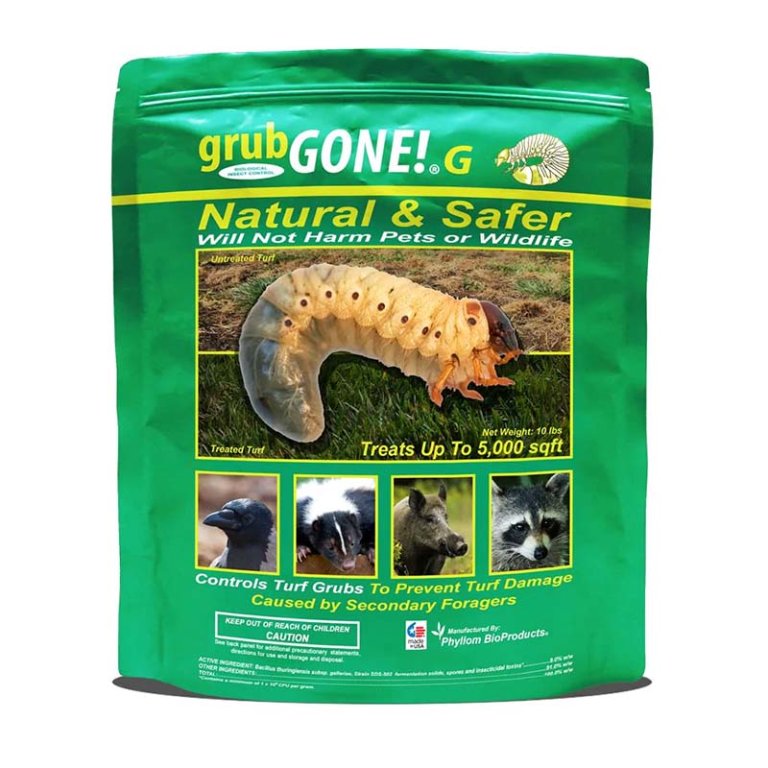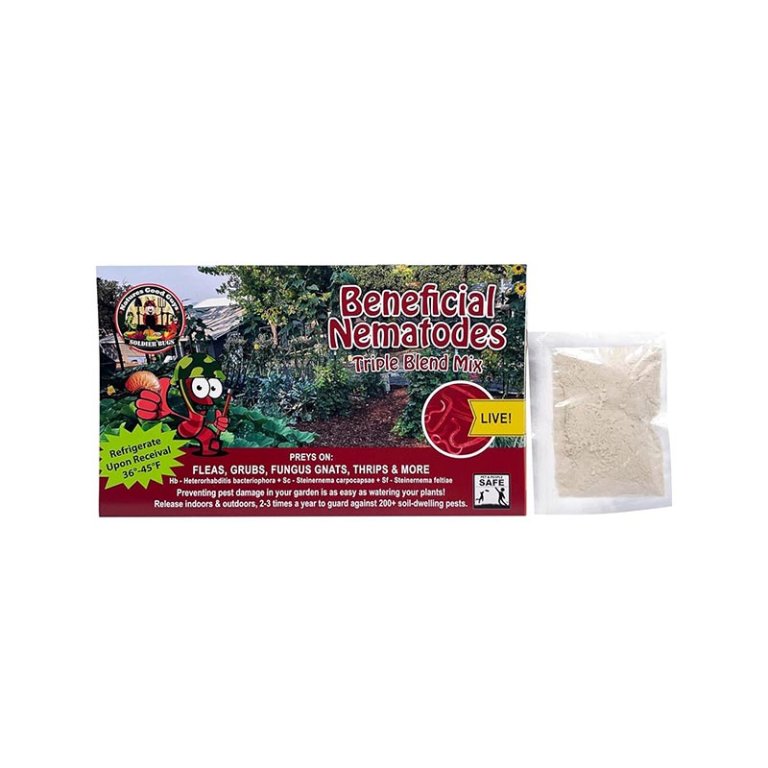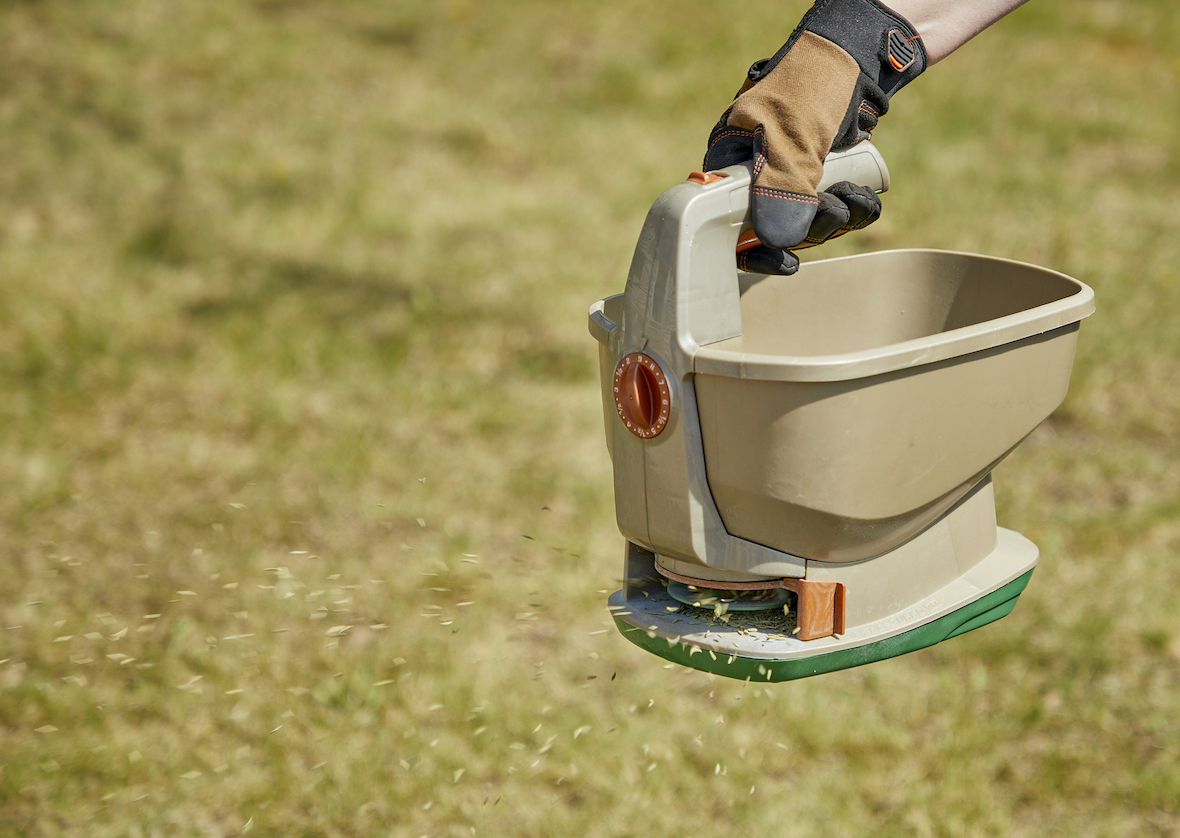
We may earn revenue from the products available on this page and participate in affiliate programs. Learn More ›
For a green, healthy, beautiful lawn, the right grub killer is key. The white grubs that damage lawns are the larval life stage of several beetle species. Japanese beetles, June bugs, masked chafers, May beetles, and other beetle larvae feed on plant roots before pupating into adults. When the population swells, especially in late summer, the grass won’t regrow roots fast enough to keep up with the hungry larvae. When this happens, it’s time to treat the infestation with grub-control products.
We spoke to a lawn care expert in addition to researching the top-selling products and found that there are two approaches to dealing with this pest problem: preventative or curative treatments. Our favorite solution is the Cedarcide Outdoor Bug Control for its natural formula and treatment of more than just grubs. Read on for factors to consider before deciding on the best grub killers, and then discover some of the top-rated products on the market.
- BEST OVERALL: Cedarcide Outdoor Bug Control
↓ Jump to Review - BEST BANG FOR THE BUCK: Southern Ag Triple Action Neem Oil
↓ Jump to Review - BEST PREVENTIVE: St. Gabriel Organics 80010-9 Milky Spore Powder
↓ Jump to Review - BEST ECO-FRIENDLY: Bug Sales 50 Million Live Beneficial Nematodes
↓ Jump to Review - BEST READY-TO-SPRAY: Bonide Captain Jack’s Neem Oil
↓ Jump to Review - BEST SELECTIVE: Grubgone!
↓ Jump to Review - BEST BROAD-SPECTRUM: NaturesGoodGuys Live Beneficial Nematodes
↓ Jump to Review - BEST CONCENTRATE: Harris Neem Oil Water-Soluble Concentrate
↓ Jump to Review
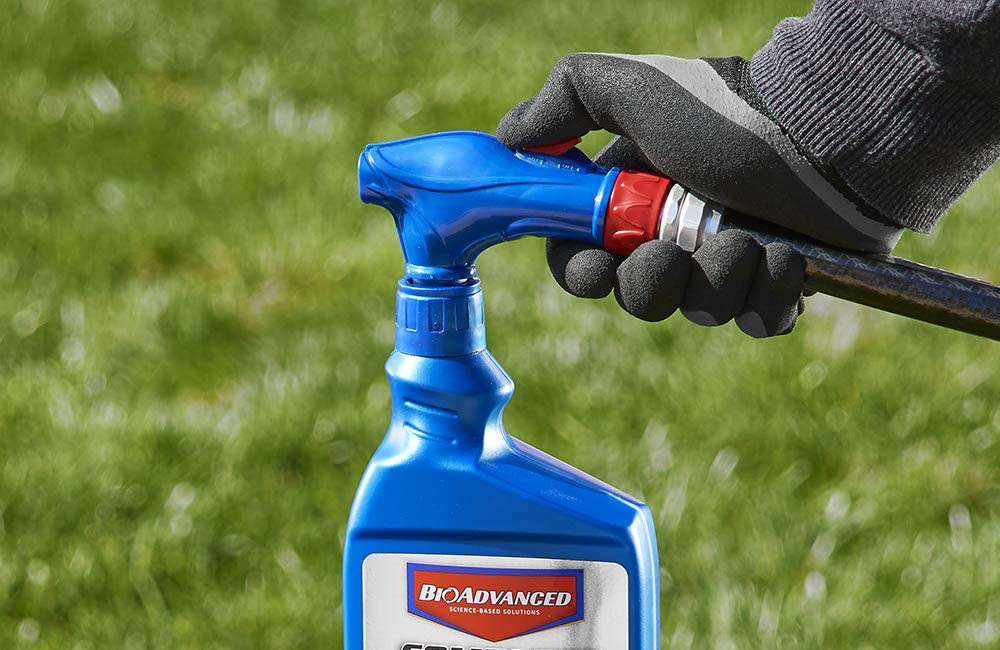
Before You Buy a Grub Killer
Before investing in an insect- and grub-control product, it’s crucial to determine if grubs are really the problem. While these pests can cause grass to turn brown and die, so too can drought, soil that’s bereft of nutrients, moles, and disease.
Here’s how to spot the telltale signs of a grub problem:
- Look for brown patches. Large sections of dead grass in late summer or early fall, when grubs are feeding the most often, are a sign of a grass grub infestation.
- Dig a hole. Check for grubs in the lawn by using a shovel to dig up a few areas in the yard. These pests have brown heads, bulbous bodies, and an off-white color. While a few grubs aren’t a problem, if there are more than five in a square foot, it could indicate an infestation.
- Walk on the turf. Grubs feed on grass roots, breaking the connection between the root and blades of grass. This grub damage creates a noticeable spongy feeling when walking on the turf.
- Pull on the turf. A grub infestation will cause grass to become disconnected from the roots. This would make it all too easy to peel away entire sections of turf from the soil.
If you do find that grubs really are the problem, it’s time to treat them. Lisa Wark, certified Master Gardener and director of marketing and operations at Champion Distinctive Landscaping Design and Care in Alpharetta, Georgia, offers her expert advice: “The optimal time to treat grubs is in late summer or early fall, when the larvae are actively feeding on grass roots in preparation for overwintering.”
Product Comparison
| Form | Quantity | Coverage Area | Compatible Insects | |
| Cedarcide Outdoor Bug Control | Concentrate | Pint, quart, and gallon bottles | Up to ½ acre (pint); up to 1 acre (quart); up to 4 acres (gallon) | Fleas, ticks, mites, ants, mosquitoes, scorpions, wasps, and roaches |
| Southern Ag Triple Action Neem Oil | Concentrated liquid | 1 pint | N/A | Aphids, spider mites, scale, whiteflies, beetles, grubs |
| St. Gabriel Organics 80010-9 Milky Spore Powder | Granules | 10 ounces | Up to 2,500 square feet | Japanese beetles |
| Bug Sales 50 Million Live Beneficial Nematodes | Granules | 5, 25, 50, or 250 million nematodes | ½ to 1 acre (50 million) | Grubs |
| Bonide Captain Jack’s Neem Oil | Spray | 32 ounces | N/A | Grubs, aphids, beetles, caterpillars, fruit flies, mites, and whiteflies |
| Grubgone! | Granules | 10-pound bag | Up to 5,000 square feet | Beetle grubs, including Japanese, Asiatic, June, and Oriental beetles; European chafers; grubs |
| NaturesGoodGuys Live Beneficial Nematodes | Nematodes | 5, 10, 25, 50, 250, and 500 million nematodes | N/A | Broad range of insects, including grubs, beetles, roaches, and fleas |
| Harris Neem Oil Water-Soluble Concentrate | Concentrated liquid | 8 ounces makes 12 gallons of spray | N/A | Aphids, mites, whiteflies, grubs, beetles |
Our Top Picks
White grubs can be extremely destructive, one of the best grub killers will most likely be the solution. Whether the purpose is to halt an active infestation or prevent one from ever occurring, these picks are capable of killing grubs while having a minimal impact on the environment.
Best Overall
Cedarcide Outdoor Bug Control
What We Like
- Active ingredient is cedar oil
- Safe for people, pets, and wildlife
- Broad-spectrum pesticide
- Hose sprayer and concentrated formula covers large areas
What We Don’t Like
- Costs more than other products
Product Specs
- Form: Concentrate
- Quantity: Pint, quart, and gallon bottles
- Coverage area: Up to ½ acre (pint); up to 1 acre (quart); up to 4 acres (gallon)
- Compatible insects: Fleas, ticks, mites, ants, mosquitoes, scorpions, wasps, and roaches
What makes Cedarcide such a great option for taking out grubs is its ability to do so without having to dump chemicals all over the lawn. Per its name, Cedarcide uses natural cedar oil as the active ingredient that controls a broad range of pests, including grubs. This mix not only makes it safe for use on yards that see plenty of pet and people traffic, but it also won’t leave behind chemicals that can negatively impact wildlife, making it worth its higher price tag.
Cedarcide comes with a bottle of concentrate and a hose-sprayer attachment. To apply, mix the concentrate in the sprayer with the right amount of water, attach a standard garden hose, and saturate the yard. A quart of Cedarcide is enough to treat up to an acre, which is enough for most residential properties. Cedarcide is also available in granules, which are ideal for treating larger yards and are applied with a spreader.
Get the Cedarcide grub killer at Cedarcide.
Best Bang for the Buck
Southern Ag Triple Action Neem Oil
What We Like
- Broad-spectrum pesticide
- Works against a variety of pests and fungus
- Kills both larvae and adult beetles
- Active ingredient is neem oil; safe for people, pets, and wildlife
What We Don’t Like
- Bottle must be shaken while applying to maintain an even mix
Product Specs
- Form: Concentrated liquid
- Quantity: 1 pint
- Coverage area: N/A
- Compatible insects: Aphids, spider mites, scale, whiteflies, beetles, grubs
This affordable option from Southern Ag kills grubs and beetles—a one-two punch against both larval and adult forms. When applied to a lawn, the neem-oil compound suppresses grubs’ appetites as it is ingested, deterring them from eating and eventually causing them to die. When neem oil comes into contact with adult beetles, it coats their body, suffocating them. Since neem oil presents very low toxicity to wildlife, it’s a more responsible way to solve a grub problem.
In addition to grubs, Southern Ag’s neem oil can take out aphids, spider mites, and other pests while also killing off fungus. To apply, dilute the solution with water, then saturate the yard using a sprayer, making sure to shake the container periodically while spraying to mix it.
Get the Southern Ag grub killer at Amazon or Walmart.
Best Preventive
St. Gabriel Organics 80010-9 Milky Spore Powder
What We Like
- Provides grub control for up to 10 years
- Safe for the environment, children, and pets
- More affordable than other products
What We Don’t Like
- Milky spore is a selective pesticide that only works with grubs
Product Specs
- Form: Granules
- Quantity: 10 ounces
- Coverage area: Up to 2,500 square feet
- Compatible insects: Japanese beetles
Milky spore is a naturally occurring microscopic bacteria that feeds on beetle larvae. The spores grow and reproduce in the soil, reaching peak strength within 3 years and persisting another 10 or more years. This environmentally friendly season-long grub-control product from St. Gabriel Organics can prevent a grub infestation without harming people, animals, or beneficial insects.
Apply the dry powder in concentrated deposits (spoonfuls) at 3- to 4-foot intervals across the lawn or garden. This 10-ounce package treats up to 2,500 square feet. The active ingredient is the bacteria species Bacillus popilliae.
Get the St. Gabriel Organics grub killer at Amazon, Ace Hardware, or The Home Depot.
Best Eco-Friendly
Bug Sales 50 Million Live Beneficial Nematodes
What We Like
- Only needs to be applied 2 to 3 times per year
- Use with a hose sprayer to cover large areas quickly
- Active ingredient is safe for the environment, children, and pets
What We Don’t Like
- Concentrated formula must be mixed with cool water before use
Product Specs
- Form: Granules
- Quantity: 5, 25, 50, or 250 million nematodes
- Coverage area: ½ to 1 acre (50 million)
- Compatible insects: Grubs
Predatory nematodes are relatively fast-acting biological controls for grubs. Unlike bacteria that must be discovered and consumed by grubs, nematodes actively seek out grubs. Within 7 to 10 days of using this product by Bug Sales, the grub population will rapidly reduce.
The nematodes will persist and continue to control grubs for up to 6 months. Mix the nematode powder with the recommended number of gallons of cool water and apply to the lawn with a pump-up sprayer, hose-end sprayer, or watering can. A package containing 50 million live nematodes covers up to an acre. The active ingredient is the nematode species Heterorhabditis bacteriophora.
Get the Bug Sales grub killer at Amazon.
Best Ready-to-Spray
Bonide Captain Jack’s Neem Oil
What We Like
- Spray bottle makes it easy to apply
- Can be used for organic gardening
- Neem oil kills both larvae and adult beetles on contact
What We Don’t Like
- Not suitable for covering large areas, such as an entire yard
Product Specs
- Form: Spray
- Quantity: 32 ounces
- Coverage area: N/A
- Compatible insects: Grubs, aphids, beetles, caterpillars, fruit flies, mites, and whiteflies
Those who don’t want to bother mixing concentrates and attaching sprayers to get rid of grubs will want to consider this Bonide product. The neem-oil pesticide comes in a ready-to-use spray bottle, making it one of the most convenient ways to spot treat grubs and the adult beetles that lay eggs. Neem oil kills both adult beetles and grubs on contact, along with a host of other pests, including mites and flies. It also has the added benefit of serving as a fungicide.
While this spray-bottle design makes it unsuitable for covering broad areas, such as an entire yard, it’s ideal for treating grub insects, beetles, and other pests lurking on roses and flowers. Since neem oil is a natural active ingredient, it’s also safe for use on vegetables, fruits, and herbs.
Get the Bonide grub killer at Amazon or The Home Depot.
Best Selective
Grubgone!
What We Like
- Broad-spectrum formula
- Won’t harm certain beneficial insects like honey bees
- Apply quickly over broad areas with a drop spreader
What We Don’t Like
- Not an effective option for killing other types of insect pests
Product Specs
- Form: Granules
- Quantity: 10-pound bag
- Coverage area: Up to 5,000 square feet
- Compatible insects: Beetle grubs, including Japanese, Asiatic, June, and Oriental beetles; European chafers; grubs
Those looking to kill off grubs without harming beneficial insects will want to check out Grubgone! This selective pesticide is effective at taking out a broad range of grubs and adult beetles, including Japanese, Oriental, and Asiatic beetles. However, it won’t harm honey bees, pollinators, and other beneficial insects, such as nematodes and parasitic wasps (both natural predators of grubs).
Grubgone! works as both a curative for existing grub problems as well as a preventative. To use Grubgone!, load the granules into a spreader. Ten pounds of GrobGone! is enough to treat up to 5,000 square feet of turf or plants. After application, water the granules using a sprinkler.
Get the GrubGone! grub killer at GrowItNaturally.com.
Best Broad-Spectrum
NaturesGoodGuys Live Beneficial Nematodes
What We Like
- Nematodes won’t harm people, pets, or the environment
- Can be used as broad-spectrum pest control against other insects
- Can be applied using a sprayer, watering can, or handheld sprayer
What We Don’t Like
- Takes longer to begin working
Product Specs
- Form: Nematodes
- Quantity: 5, 10, 25, 50, 250, and 500 million nematodes
- Coverage area: N/A
- Compatible insects: Broad range of insects, including grubs, beetles, roaches, and fleas
NaturesGoodGuys uses microscopic nematodes—a natural predator of grubs—in this organic broad-spectrum pesticide. These tiny predators exist in the soil looking for hosts, such as grub worms, that they can penetrate, kill, and feed on. Since they pose no threat to people, pets, or wildlife, nematodes are an excellent organic option for controlling the grub population.
This blend of three different types of nematodes works on a variety of grub types, including Japanese beetles and lawn grubs. They’re also an effective control for a broad range of other pests like fire ants, roaches, fleas, and aphids. To apply, dilute with water, then use a hose sprayer, watering can, or handheld sprayer to distribute in areas where pest activity has been spotted.
Get the NaturesGoodGuys grub killer at Amazon.
Best Concentrate
Harris Neem Oil Water-Soluble Concentrate
What We Like
- Neem oil is safe for human, pets, and the environment
- 8-ounce container makes up to 12 gallons of spray
- Kills both adults and larvae
What We Don’t Like
- Concentrated solution must be mixed in a separate container with water
Product Specs
- Form: Concentrated liquid
- Quantity: 8 ounces makes 12 gallons of spray
- Coverage area: N/A
- Compatible insects: Aphids, mites, whiteflies, grubs, beetles
This concentrated mix of neem oil, which makes up to 12 gallons of spray, is an ideal option for those who need to control grubs over a larger area. With its 100 percent neem-oil content, this Harris concentrate is capable of taking out grub worms and adult beetles without harming wildlife or presenting a danger to pets and people.
To use, mix Harris neem oil with water and add to a sprayer. The neem oil kills any grubs that feed on plants soaked in it and suffocates any adult beetles that come into contact with it. Its concentrated form also makes this oil one of the more affordable means of controlling grubs.
Get the Harris grub killer at Amazon.
Or, DIY Your Own Grub Killer
While there are plenty of grub killer for lawns available at the local home improvement store, these pest-control products can be pretty pricey, especially for those planning to treat an entire yard. A thriftier alternative is to use one of the DIY solutions below.
- Make grub killer. Ordinary dish soap can be an effective DIY lawn grub killer. Simply mix 3 tablespoons of dish soap with 1 gallon of water and spray it on the lawn. The soap will smother both adult beetles and grub larvae alike.
- Attract natural predators. A natural—and beautiful—way to keep grubs in check is to boost the bird population. Set up bird feeders, birdhouses, and water features to attract birds. Chickadees, blue jays, robins, and other bird species will peck at the soil to munch on grubs.
- Dethatch the lawn. Grubs like lawns that have a thick layer of thatch that they can shelter under. Make the lawn less hospital for them by dethatching and aerating the yard. Dethatching will also make other natural grub killers, such as nematodes and milky spore, more effective and promote a healthier lawn.
Jump to Our Top Picks
How We Chose the Best Grub Killers
These recommendations for the best grub-control products include a variety of formulas to meet the needs of typical users hoping to maintain a pest-free residential landscape.
We narrowed our research to focus primarily on organic grub killers that use natural ingredients, which don’t pose the same threat to wildlife as chemical-based products. These include grub killers that use such natural ingredients as nematodes, milky spore, Bacillus thuringiensis (Bt), cedar oil, and neem oil.
Since the best grub killers must typically be applied to an entire lawn to be effective, we also leaned toward products that can be applied over broad areas with either a spreader or a sprayer that attaches to a garden hose.
Keeping size in mind, we also leaned toward those that offered the best bang for the buck with the ability to cover entire yards.
Finally, we included both selective options for those looking to kill pests while preserving the population of beneficial insects as well as broad-spectrum pesticides that can control more than just grubs.
Why We Didn’t Recommend Products Containing Dylox
While there are other grub killers on the market, such as BioAdvanced Grub Killer Plus and Scotts GrubEX1, they didn’t make our list of Top Picks because they contain toxic ingredients like Dylox and chlorantraniliprole, which can cause harm to humans, pets, wildlife, and the environment. We don’t recommend using them unless there is a large grub infestation.
What to Consider When Choosing a Grub Killer
Not every grub solution is ideal for all circumstances. Some of the best grub killers act slowly, but an active infestation requires fast action before damaging the lawn. Continue reading to learn some important factors to consider before making a selection.
Liquid vs. Granular
Liquid treatments are fast and effective for treating grub infestations: Simply spray the treatment on the lawn. But gauging the rate of coverage is difficult, and liquid spills are messier and harder to clean than spilled granules. Also, users may need to dilute some products with water before application.
Granular grub killers are convenient to apply with a handheld or walk-behind lawn spreader. While this is a relatively clean and convenient way to treat, it’s important to note that the best time to apply is just before rainfall, so the active ingredients penetrate deep into the soil. Watering in the granules using a sprinkler is also an option.
Ingredients
Organic grub killers include milky spore and beneficial nematodes. Both of these products use biological agents to prey on grubs in the yard. They are completely safe for people, pets, and other beneficial insects and highly effective in eliminating grub infestations—and the effect lasts for years. However, they work slowly and may not be ideal for active infestations.
Chemical-based products use such active ingredients as carbaryl and trichlorfon. While both pesticides can be toxic to humans as well as birds, fish, and other wildlife, they might be the only effective way to eliminate a large grub infestation.
Safety
Always read and follow the manufacturer’s instructions for mixing and applying insecticides, both organic and synthetic. Wear protective clothing, such as gloves, eyewear, long sleeves, and closed-toe shoes while mixing and handling. Avoid splashing and spills of liquids. Dry products may be dusty. Pour in a well-ventilated area, and wear a mask to avoid breathing dust.
When not in use, always store chemicals in their original containers and a locked cabinet, away from children and pets.
Application
Be sure to follow the manufacturer’s instructions regarding the application rate and timing between applications. Mix liquid concentrates according to the specified dilution rate. Wear rubber boots while applying liquid treatments, and rinse off the residue afterward. To keep applications on target and eliminate spray drift, avoid applying in windy weather. Allow treated areas to dry thoroughly before permitting human or pet traffic.
FAQs
Get to know more about reducing and killing grubs by checking out some of the most frequently asked questions about grub killers below.
The active ingredients in many synthetic grub-control products kill other bugs as well. Each product is slightly different, so be sure to read the label to avoid unwanted collateral damage and control additional bugs.
Yes, but avoid broad-spectrum sprays that will harm pollinators and helpful insects. For this reason, flower and vegetable gardens are ideal locations to apply beneficial nematodes or milky spore.
Some products begin killing grubs in as little as 24 hours.
Late summer or early fall are the best times to treat for grubs.
Wark says that the main cause of grubs is adult beetles (like Japanese beetles) laying eggs in lawns. “After the eggs hatch into grubs, they feed voraciously on grass roots, damaging the lawn,” she says.
“I always advise fertilizing lawns after applying grub control treatment,” Wark recommends. “Fertilizer can accelerate the breakdown of pesticides in the soil, reducing their effectiveness. It’s best to wait at least 2 to 4 weeks after treatment before fertilizing.”
